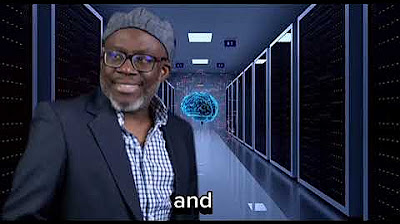Generative AI 101: When to use RAG vs Fine Tuning?
Summary
TLDRIn this episode of 'JNA 101', the host discusses the optimal use of large language models (LLMs). They explain the cost and process of fine-tuning an LLM for specific data sets, highlighting its effectiveness in niche applications like predicting crop growth based on soil data. The host contrasts this with using LLMs out-of-the-box or through retrieval (RG), which is more cost-effective and integrates well with enterprise systems. The video concludes with advice on choosing between RG and fine-tuning based on the specific needs of the business.
Takeaways
- 💡 Fine-tuning a large language model (LLM) is costly but necessary for specific use cases where you have unique data sets.
- 📚 Fine-tuning requires a clean, bias-free dataset and investment in engineering and research efforts to adjust the model properly.
- 🌱 An example of when fine-tuning is essential is in niche industries like agriculture, where predictive models for crop growth rely on proprietary data.
- 🔍 Open-source LLMs may not have learned from niche data that is not readily available on the internet, making fine-tuning a better option for such specific cases.
- 🚀 Fine-tuning is beneficial when you have access to exclusive data that can significantly enhance the LLM's performance in a particular application.
- 🤖 Using an LLM directly is suitable for general purposes like chatting with virtual assistants but lacks integration with company databases.
- 🔗 The real efficiency in enterprises comes from integrating LLMs with enterprise knowledge, such as documents and ERP systems.
- 🔍 Retrieval (RG) is an alternative to fine-tuning that involves fetching relevant facts from enterprise systems for the LLM to generate responses.
- 💰 RG is cost-effective as it doesn't require the computational resources and data preparation needed for fine-tuning.
- ⚖️ The choice between RG and fine-tuning depends on the use case; RG is suitable for general inquiries, while fine-tuning is for specific business-related cases.
- 📧 The speaker offers one-on-one discussions for further questions, encouraging viewers to reach out via social media channels.
Q & A
What is the main topic discussed in the video script?
-The main topic is the decision-making process regarding when to use a fine-tuned large language model (LLM), when to use an out-of-the-box LLM, and when to use retrieval-augmented generation (RG).
Why is fine-tuning an LLM considered costly?
-Fine-tuning is costly because it involves taking a pre-trained model, preparing a clean and bias-free dataset, and investing engineering and research resources to properly adjust the model for specific tasks.
What are the specific use cases where fine-tuning an LLM is recommended?
-Fine-tuning is recommended when there is niche data available only to a few companies or not readily available on the internet, and when the LLM needs to perform optimally on tasks that are highly specific to that data.
Can you provide an example of a scenario where fine-tuning an LLM is beneficial?
-An example is an agriculture company with decades of data on soil, nutrients, and bacteria that can be used to predict the best crop for a given land and season, which would greatly benefit from a fine-tuned LLM.
What is the primary limitation of using an out-of-the-box LLM for enterprise use?
-The primary limitation is that an out-of-the-box LLM does not integrate with a company's database and lacks the ability to make sense of enterprise-specific knowledge without additional setup.
What does RG stand for, and how does it differ from fine-tuning an LLM?
-RG stands for retrieval-augmented generation. It differs from fine-tuning by not requiring the LLM to be trained on new data but instead providing it with retrieved facts to generate responses.
Why is RG considered more efficient for large enterprises?
-RG is efficient for large enterprises because it allows the LLM to access and make sense of enterprise knowledge from documents, ERP systems, CRM, etc., without the need for fine-tuning.
What percentage of use cases can be solved with RG according to the speaker's experience?
-According to the speaker, 80% or more of use cases can be solved with RG.
How does RG help in providing accurate responses to enterprise queries?
-RG helps by retrieving relevant facts from enterprise systems and providing them to the LLM, which then uses these facts to create accurate and contextually appropriate responses.
What is the speaker's offer to viewers who have questions on this topic?
-The speaker offers to discuss one-on-one with viewers who have questions, encouraging them to reach out via social media channels for further discussion.
What is the main takeaway from the script regarding the use of LLMs in business?
-The main takeaway is that businesses should choose between fine-tuning, using an out-of-the-box LLM, or RG based on the specificity of their data and use cases, with RG being a cost-effective option for general use cases and fine-tuning for specific business-related use cases.
Outlines

此内容仅限付费用户访问。 请升级后访问。
立即升级Mindmap

此内容仅限付费用户访问。 请升级后访问。
立即升级Keywords

此内容仅限付费用户访问。 请升级后访问。
立即升级Highlights

此内容仅限付费用户访问。 请升级后访问。
立即升级Transcripts

此内容仅限付费用户访问。 请升级后访问。
立即升级浏览更多相关视频
5.0 / 5 (0 votes)






